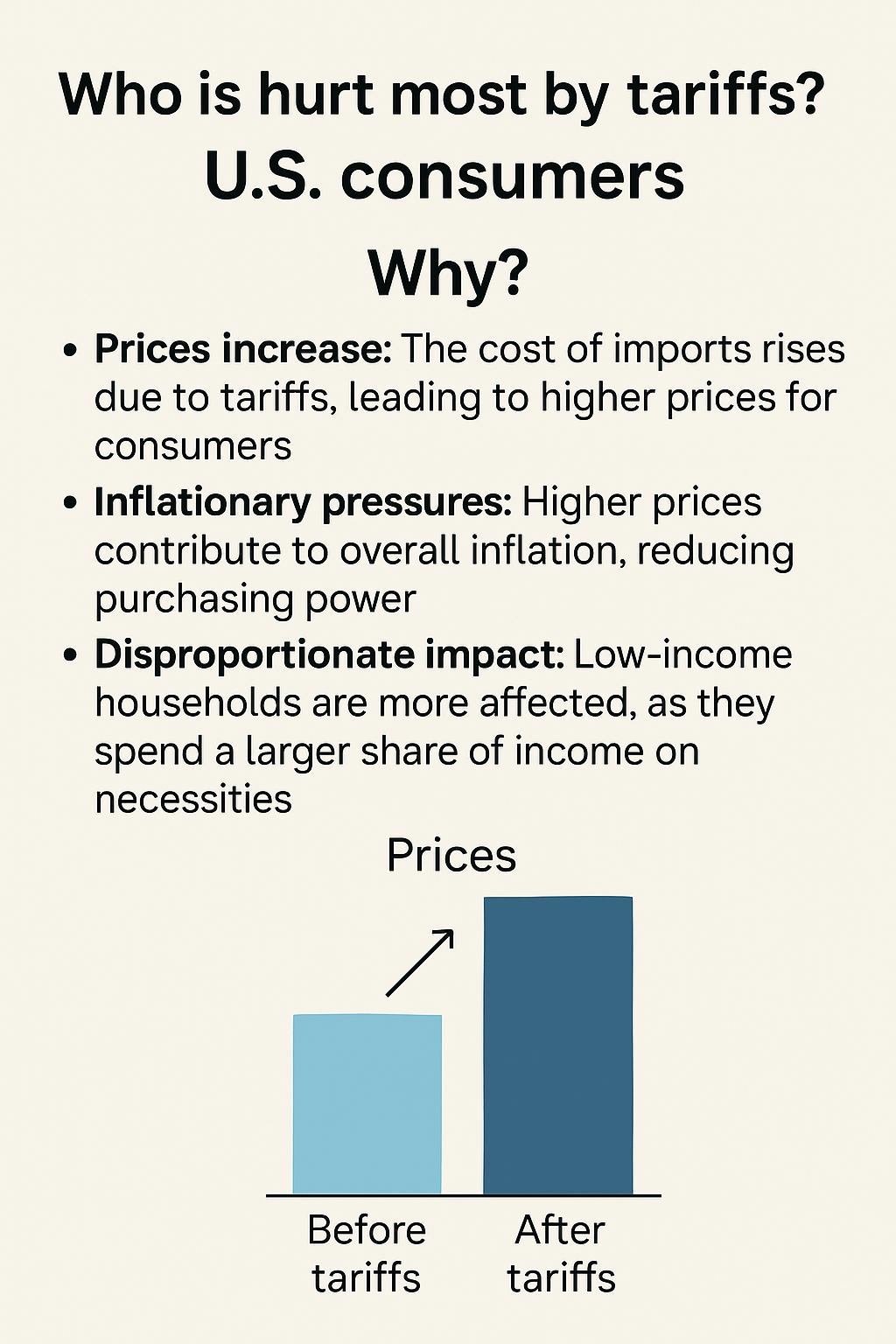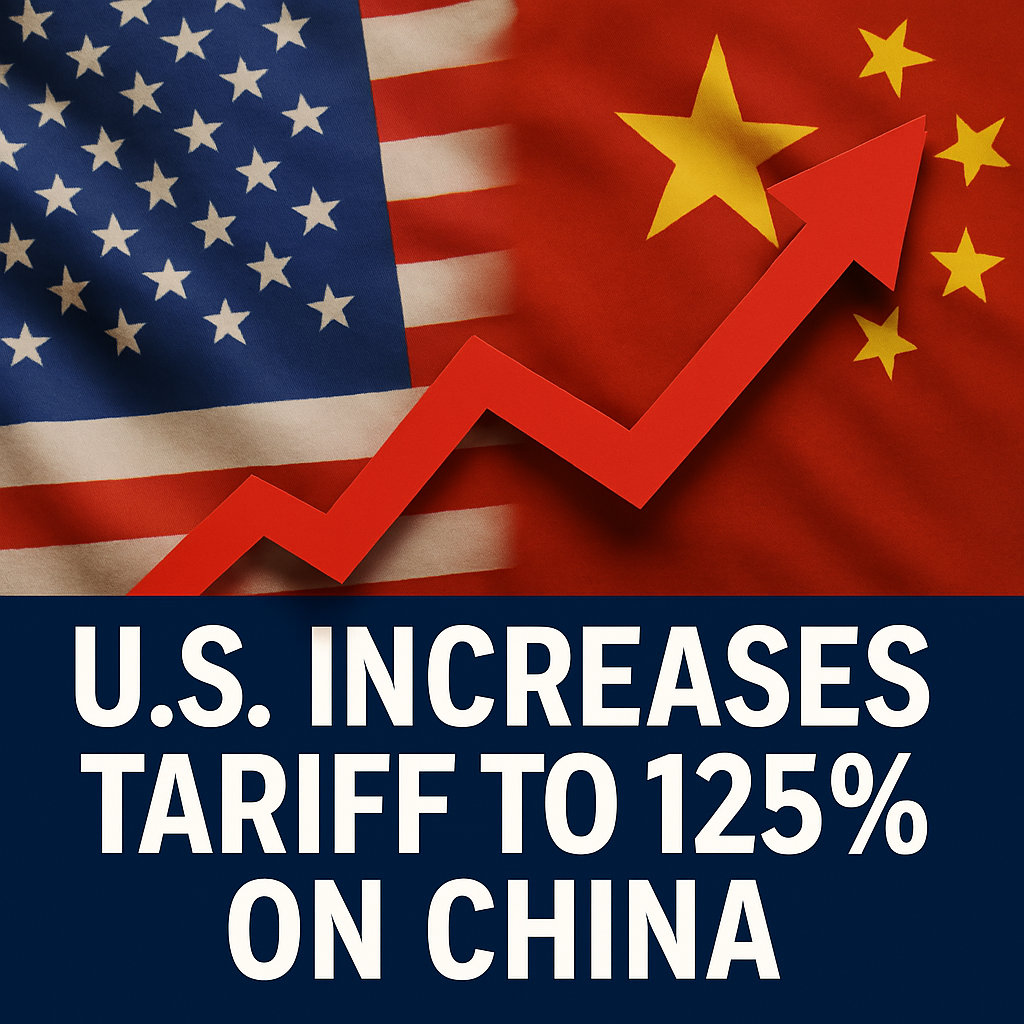🧩 1. Who Suffers the Most from U.S. Tariffs?
✅ The biggest victims are American people, especially everyday consumers and low-income households.
💸 2. How Do Tariffs Lead to Price Increases?
✅ Cost Transmission Chain (Example: Chinese TV):
Tariff imposed
➡️ Importers: higher costs
➡️ Retailers: price markup
➡️ Consumers: pay more
Example:
- A 25% tariff on a $300 TV = $75 extra.
- Retail price rises from $399 to ~$474.
➡️ American consumers pay more for the same product.
📊 3. Real Data & Case Studies
📌 Case 1: Washing Machines (2018)
- Tariffs caused prices to rise 12% (~$86 per unit).
- Dryers also went up due to less competition.
➡️ Families spent $100–$120 more on appliances.
📌 Case 2: Trump-era China Tariffs
- Affected ~$370 billion in goods (electronics, clothes, furniture).
- Studies show nearly 100% of the cost was passed to consumers.
➡️ U.S. households paid an extra $800–$1300 per year.
🧨 4. Ripple Effects of Rising Prices
✅ Inflation
- Tariffs on materials raise prices across the board.
- Fed raises interest rates → housing loans & credit cost more.
✅ Weakened Purchasing Power
- Costs rise, wages don’t → real income drops.
- Low-income families hurt most due to spending patterns.
🏭 5. Secondary Economic Damage
✅ Companies:
- Face higher costs → lay-offs, reduced hiring.
- U.S. exports suffer from retaliatory tariffs.
- Agriculture & manufacturing hit hardest.
➡️ Ultimately, workers lose jobs, and the economy slows.
🎯 Summary: Why Americans Are the Biggest Victims
| Area | Impact |
|---|---|
| Product prices | TVs, appliances, clothes cost more |
| Cost of living | Food, energy, rent rise → essentials more expensive |
| Savings & debt | Savings drop, credit card debt rises |
| Low-income groups | Hit hardest due to high essential spending |
| Employment | Companies cut back → job loss, wage stagnation |
| Social tension | Consumer confidence down, inequality up |
Tariffs may seem to punish foreign producers, but in reality, they are a hidden tax on American consumers.




